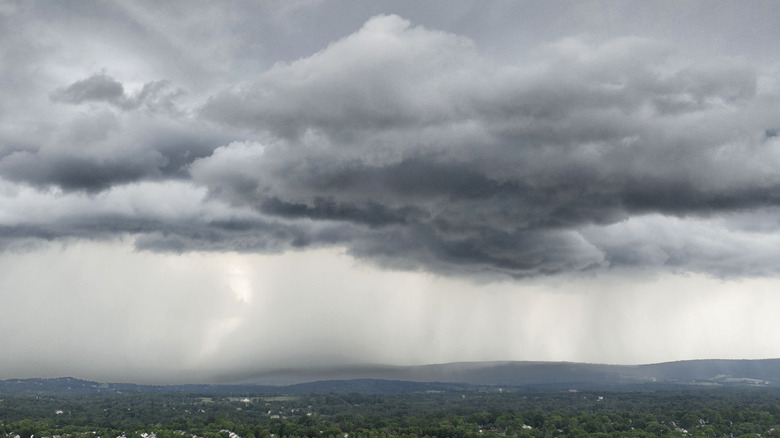
Gerville/Getty Images
Cloud seeding may be a term you’ve recently just heard, but it has been around for decades. Cloud Seeding is the process of introducing substances into clouds to induce rainfall or snow. The first experiments with cloud seeding occurred shortly after World War II and have since been used in many dry areas worldwide. Cloud Seeding can be done via ground generators, cannons, rockets, or aircraft.
To explain how the process works, we must first review how clouds work. Clouds are made up of water droplets or ice crystals bound to particles known as condensation or ice nuclei in the atmosphere. Cloud seeding puts artificial nuclei into the air using silver iodide or carbon dioxide (dry ice), which enables the formation of precipitation particles within clouds. This can result in increased rain or snowfall in areas that need it the most.
Areas like Santa Barbara, California, use cloud seeding because it has an abundance of moisture but not enough condensation nuclei, which can prevent precipitation particles from forming in clouds. Despite many government-sponsored cloud seeding projects worldwide, the effectiveness of the process is still debated. This is because it can be difficult to measure how much cloud seeding ultimately impacts rainfall.
Daniel Swain, climate scientist at UCLA, previously told CNN that conducting a completely controlled experiment on the matter is almost impossible. Without a controlled experiment, it can be hard to tell how much rain a cloud-seeded cloud would have produced if it wasn’t pumped with artificial nuclei.
Is cloud seeding to blame for the Dubai flooding?

Katiekk2/Getty Images
Dubai, United Arab Emirates (UAE), has experienced record floods in the last day. Normally, the city experiences less than 3.9 inches of rainfall, but 62 miles from Dubai in Al-Ain, 10 inches of rain was recorded within the span of 24 hours. Many were quick to blame cloud seeding for the downpour because the UAE has been using cloud seeding to boost rainfall. But according to most experts, it is not the culprit.
Following the flood, meteorologists argued that there was no evidence that cloud seeding caused the massive rainfall. CNN noted that the storm could be seen coming days out of the impact and stated that the «torrential rainfall was driven by a large, slow-moving storm that traversed the Arabian Peninsula and tracked into the Gulf of Oman.” Torrential rainfall is also not new to the Middle East due to its climate. Back in 2016, 9.4 inches of rain poured down onto Dubai during a particularly large storm.
Experts argue that the real reason for the immense amount of rain is climate change. Richard Allan, a professor of climate science at the University of Reading, told the BBC that the climate warming means more moisture in the air, resulting in more powerful storms. These natural disasters are expected to continue and even get worse unless measures are taken to reverse the effects of climate change.